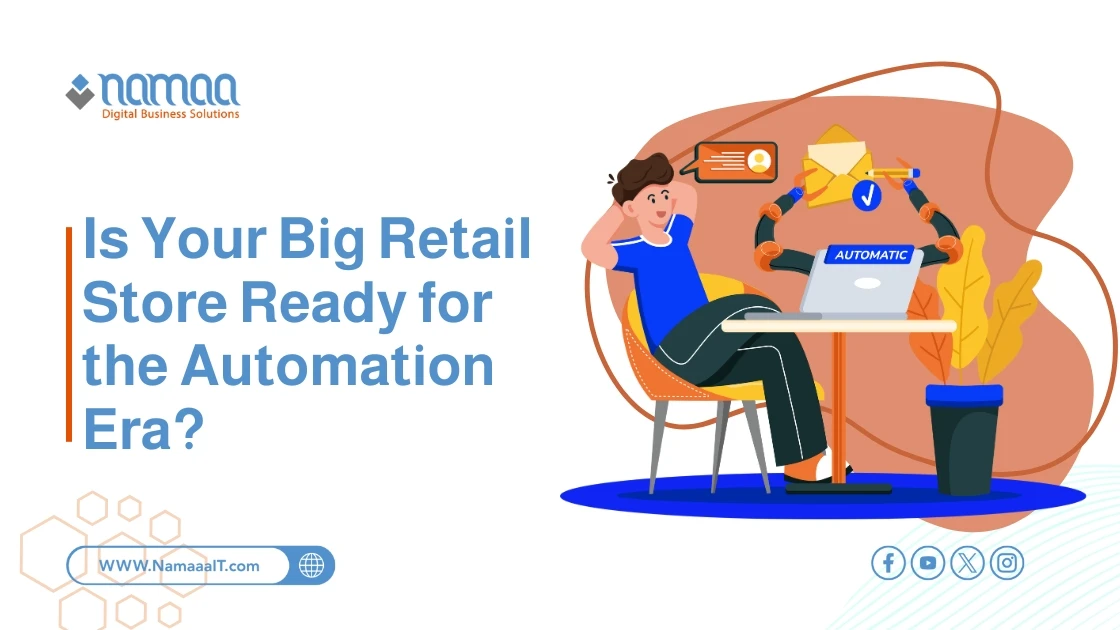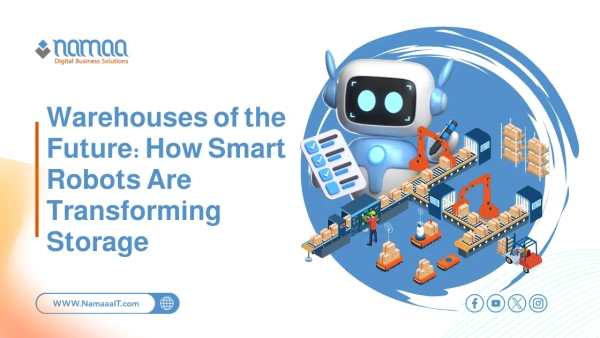In recent years, the concept of automating large retail stores has become a key focus in the retail world.
Rapid shifts in consumer behavior and ongoing technological advancement are prompting owners of large stores to rethink their day-to-day operations. Relying on traditional methods is no longer enough to keep up with competition or meet customer expectations. As the demand for efficiency and speed rises, automation emerges as a strategic option that reshapes the rules of the game, offering large retailers a real opportunity for distinction and sustainability in an ever-evolving digital era.
What is meant by automating large retail stores?
Automating large retail stores refers to the implementation of smart systems and technologies that transform traditional in-store operations into digitized, automated processes. This includes using software and smart devices to manage inventory, process orders, monitor sales, and deliver faster, more accurate customer service.
Automation relies on technologies such as artificial intelligence (AI), the Internet of Things (IoT), and robotics, which reduce human intervention in routine tasks and enhance operational efficiency. For example, automation can provide intelligent point-of-sale systems, self-service scanning devices, and real-time inventory monitoring solutions.
This transformation extends beyond just technical tools—it also involves restructuring administrative processes and training staff to use new systems.
Ultimately, the goal of automating large retail stores is to create a more agile and innovative shopping environment capable of quickly adapting to changing market demands and rising customer expectations.
Benefits of Automation for Large Stores
Automation offers a wide range of benefits that help large retailers boost competitiveness and long-term sustainability:
- Reduces human errors resulting from manual processes, leading to higher accuracy in inventory and billing management.
- Increases the efficiency of daily operations, allowing routine tasks to be completed faster and at lower cost.
- Enables staff to focus on high-value tasks like customer service or developing sales strategies, rather than repetitive duties.
- Provides real-time data on performance and sales, helping management make data-driven decisions.
- Enhances the customer experience by minimizing wait times and offering advanced self-service options, increasing satisfaction and repeat visits.
Is Your Store Ready for the Automation Era?
Preparing for the automation era requires store owners to assess their current infrastructure and workforce readiness for adopting modern technologies.
While automation may seem appealing, it needs strategic planning and careful investment to deliver meaningful results. Key questions to ask include:
- Does the store have a digital system for managing inventory and sales?
- Are employees prepared to learn and use new technologies?
- Is there a budget allocated for system upgrades and staff training?
Often, a gradual change is best—beginning with automating specific departments and expanding progressively. Proper preparation ensures automation becomes a growth opportunity rather than a burden.
How to Start Your Automation Journey
To begin automating your large retail store, follow these practical steps:
- Define main objectives such as cost reduction or improved customer experience.
- Evaluate current processes to identify weaknesses that automation can address.
- Research appropriate technologies that fit your store’s needs and scale.
- Develop a training plan to equip employees with the skills to adapt.
- Implement automation gradually, starting with selected departments, and continuously evaluate performance.
- Gather customer and employee feedback to refine and enhance the automated processes.
Following these steps can help ensure a smooth and low-risk transition into the automation era.
How to Choose the Right System for Automating Your Large Store
Choosing the right system is crucial to a successful digital transformation. Here is a table outlining key selection criteria:
| Criterion | What to Consider |
|---|---|
| Ease of Use | User-friendly interface and easy staff training |
| System Compatibility | Seamless integration with current inventory systems |
| Technical Support | Responsive and effective support availability |
| Security | Robust data protection and privacy measures |
| Cost | Transparent total cost (purchase, maintenance, upgrades) |
| Scalability | Ability to expand features as the store grows |
Analyzing these factors helps make an informed decision that ensures long-term system sustainability and effectiveness without disrupting daily operations.
Common Mistakes in Store Automation
Relying on a single technology: Assuming one successful tool fits all operations can be misleading. Each process may need a unique technical solution.
Neglecting IT involvement: Failing to involve IT teams during planning and execution can lead to integration issues and long-term maintenance challenges.
Insufficient testing: Launching systems without adequate testing may cause failures or data mishandling.
Automating unclear or complex processes: Trying to automate poorly documented processes leads to chaos and wasted resources.
Ignoring quality monitoring post-implementation: Not tracking system performance can cause undetected errors and impact overall store efficiency.
FAQ: Automation in Large Retail Stores
1. How does automation personalize the customer shopping experience?
Automation uses AI algorithms to analyze customer behavior and purchase history, allowing the store to offer tailored products and promotions. This improves satisfaction and loyalty, encouraging repeat purchases with personalized experiences.
2. What operations beyond inventory and sales can be automated?
Automation can cover returns processing, digital marketing, staff scheduling, smart customer support (e.g., chatbots), promotional management, and even shipping via robots or self-driving vehicles.
3. What are the main security challenges in store automation?
The biggest concerns include customer data protection, information privacy, and cyber theft. Addressing these requires investment in secure systems, regular updates, and staff training on digital risk management.
4. Can automation systems be scaled with store growth or product expansion?
Yes. Modern automation systems are designed for scalability, allowing the addition of new features or integration with other platforms (e.g., order or warehouse management) as the business evolves.
5. How does automation affect order or shipping error handling?
Automation reduces order and shipping errors through smart guidance systems (e.g., visual cues, guided robots). Real-time tracking makes it easy to identify and correct mistakes before they impact the customer experience.
Summary
✅ 73% of large stores using automation saw a 40% drop in operational errors.
✅ Automation cut operating costs by 25% on average and boosted staff productivity.
✅ 60% of customers prefer stores with self-service and automation features, increasing satisfaction and loyalty.
✅ Stores that adopted full automation saw inventory processing speeds increase by 50%.
✅ Experts project the global market for large store automation will exceed $23 billion by 2028, with annual growth above 10%.





.webp)



